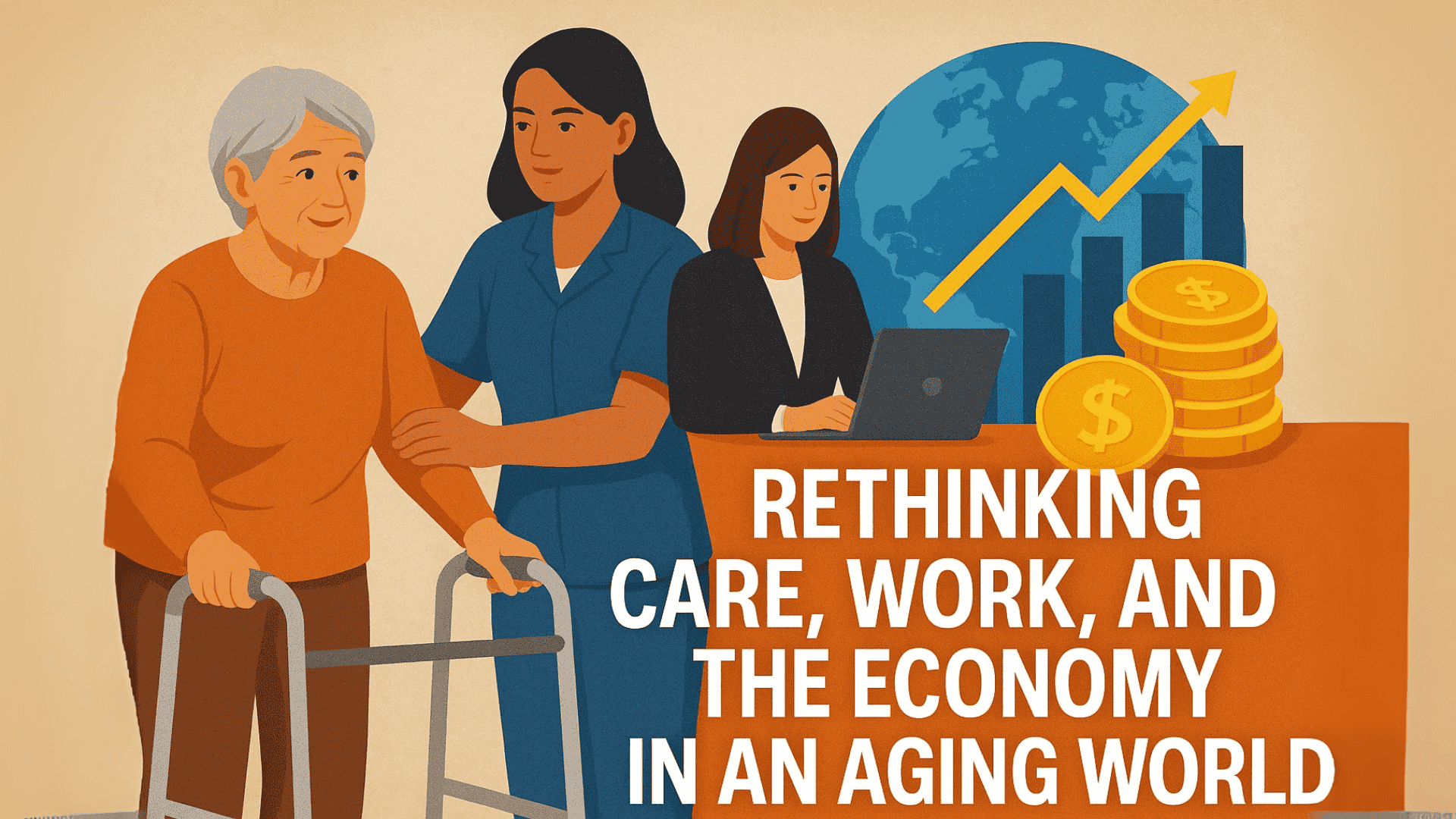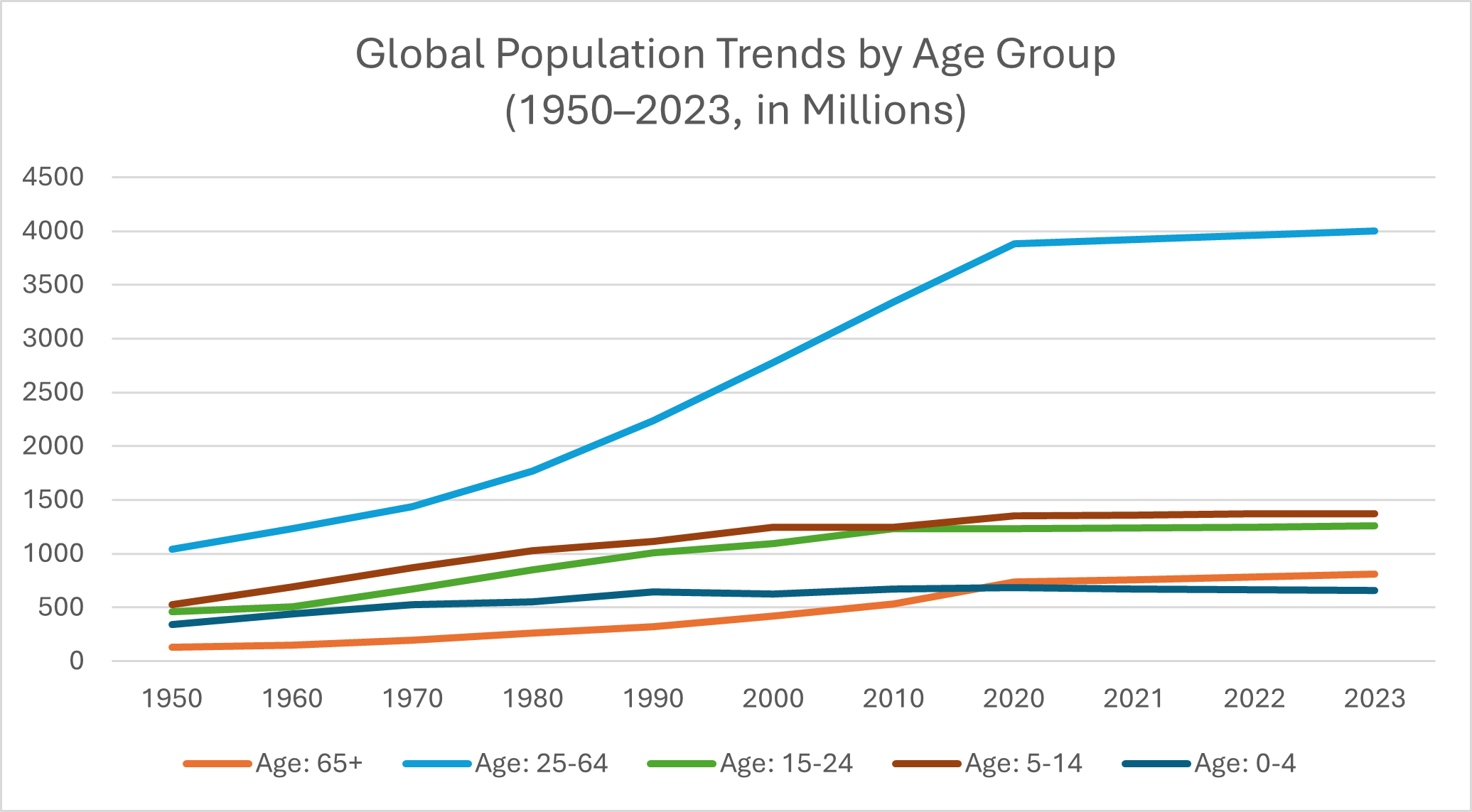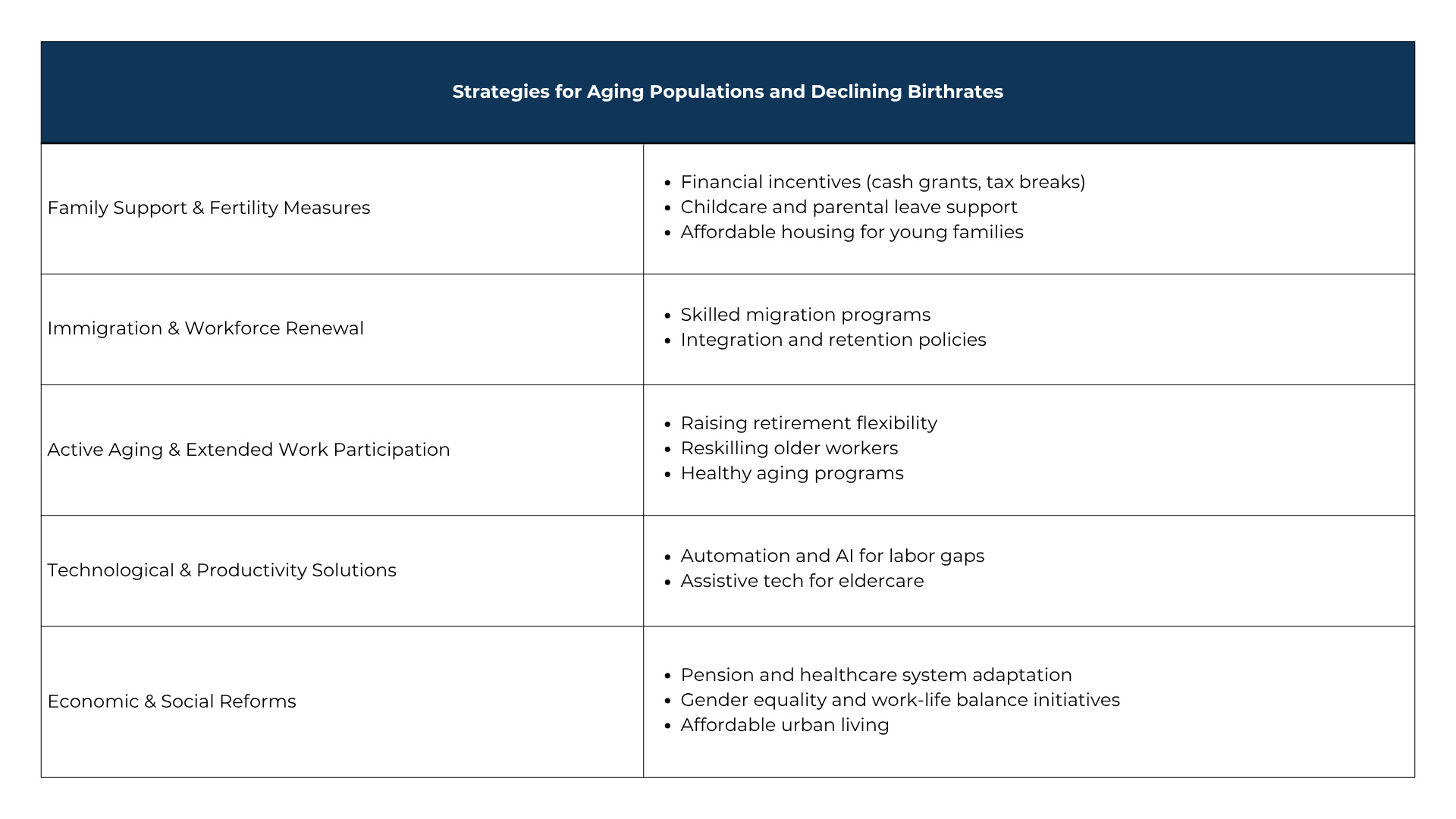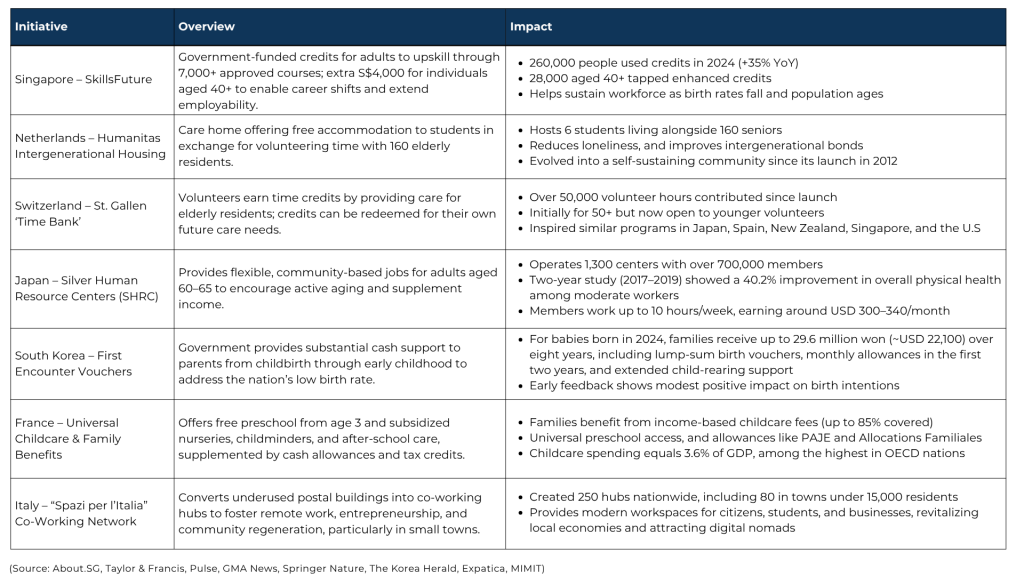
05 Aug Rethinking Care, Work, and the Economy in an Aging World
Global economies are entering uncharted territory. For decades, population growth fueled labor markets, consumer demand, and economic expansion. That equation is now shifting.

(Source: Our World in Data)
The data highlights a striking demographic reversal: while the global population aged 65 and above has been steadily accelerating since 1950, the number of children aged 0–4 has plateaued and even declined in recent years. This divergence signals a world that is aging faster than it is replenishing its youngest generations.
As of 2023, over half of the world’s economies, representing two-thirds of the global population, report fertility rates below the replacement level of 2.1 children per woman (Source: United Nations). In countries like South Korea, where the birth rate has dropped to 0.72, and China, where population decline is already underway, this shift is particularly acute. Even younger economies in Southeast Asia, Latin America, and Eastern Europe are aging faster than they can adapt.
This is no longer a distant demographic forecast; it is a present-day economic reality. United Nations projections indicate that the global population aged 65 and over will more than double, from 761 million in 2021 to 1.6 billion by 2050. This rapid growth of older populations, combined with stagnating or declining birth rates, will put increasing strain on healthcare systems, pension schemes, and labor markets. Fewer babies born today mean fewer workers tomorrow and more dependents per employee, demanding a fundamental redefinition of productivity, prosperity, and resilience in an aging world.
Addressing the Twin Challenges of Aging Populations and Declining Birth Rates
Many countries are confronting shrinking workforces and rising dependency ratios. The following graphic illustrates five key strategic pillars and their supporting measures that can help mitigate these demographic challenges and foster long-term social and economic stability.

These strategies demonstrate that no single intervention is sufficient; sustainable impact requires a coordinated approach. By combining family support, immigration, active aging, technological innovation, and broader economic reforms, countries can better adapt to demographic transitions and safeguard future growth.
Adaptive Models with Measurable Impact
While these strategic pillars provide a broad framework for addressing aging populations and declining birth rates, practical implementation often relies on adaptive models that translate policy into action. The following examples highlight best practices that demonstrate how such models can drive measurable demographic and socioeconomic impact.

These models illustrate practical pathways for resilience, showing how innovation and structural flexibility can reduce the strain on public systems while enhancing quality of life for both older and younger generations. Their effectiveness depends on context-specific implementation and alignment with broader demographic strategies.
While these strategies and adaptive models offer promising pathways, their implementation is far from straightforward. Multiple structural, cultural, and economic barriers can limit both their speed and scale of impact:
Recognizing the Barriers
- High fiscal costs: Expanding family support programs, childcare subsidies, or pension reforms requires significant public funding, which may strain national budgets.
- Cultural and political resistance: Immigration-based workforce renewal can face public opposition and difficulties with social integration.
- Slow demographic response: Even effective fertility and aging policies take decades to show measurable results, making short-term impact limited.
- Reskilling and health demands: Extending working lives depends on lifelong learning programs and health support that many economies have yet to scale.
- Technological barriers: While robotics and AI offer solutions for eldercare and productivity, adoption is uneven due to cost and accessibility concerns.
- Coordination challenges: Effective implementation requires alignment between government, private sector, and civil society, which is often difficult to sustain.
Shaping the Future Amid Demographic Shifts
The demographic transformation underway is both a challenge and an opportunity. While aging populations and declining birth rates threaten to disrupt traditional economic models, they also compel societies to innovate, rethinking how care is delivered, how workforces are structured, and how prosperity is defined. The Frost & Sullivan Institute emphasizes that countries that act now, combining strategic reforms with adaptive models tailored to their context, will be better positioned to safeguard economic vitality and social well-being in the decades ahead. The question is not whether change is coming, but how prepared we are to shape it.
Blog by Sakthi Kumararaja,
Associate, Frost & Sullivan Institute
